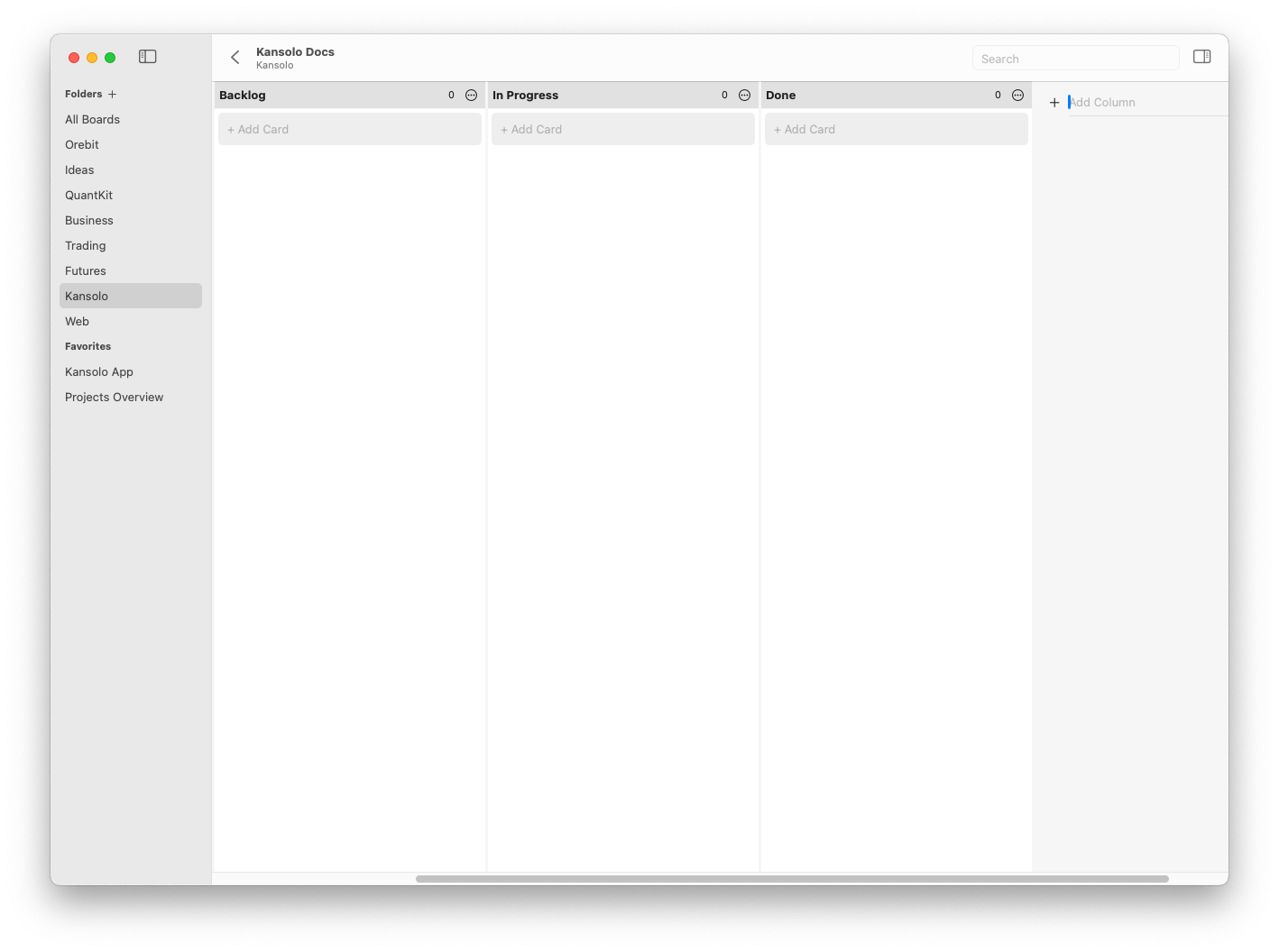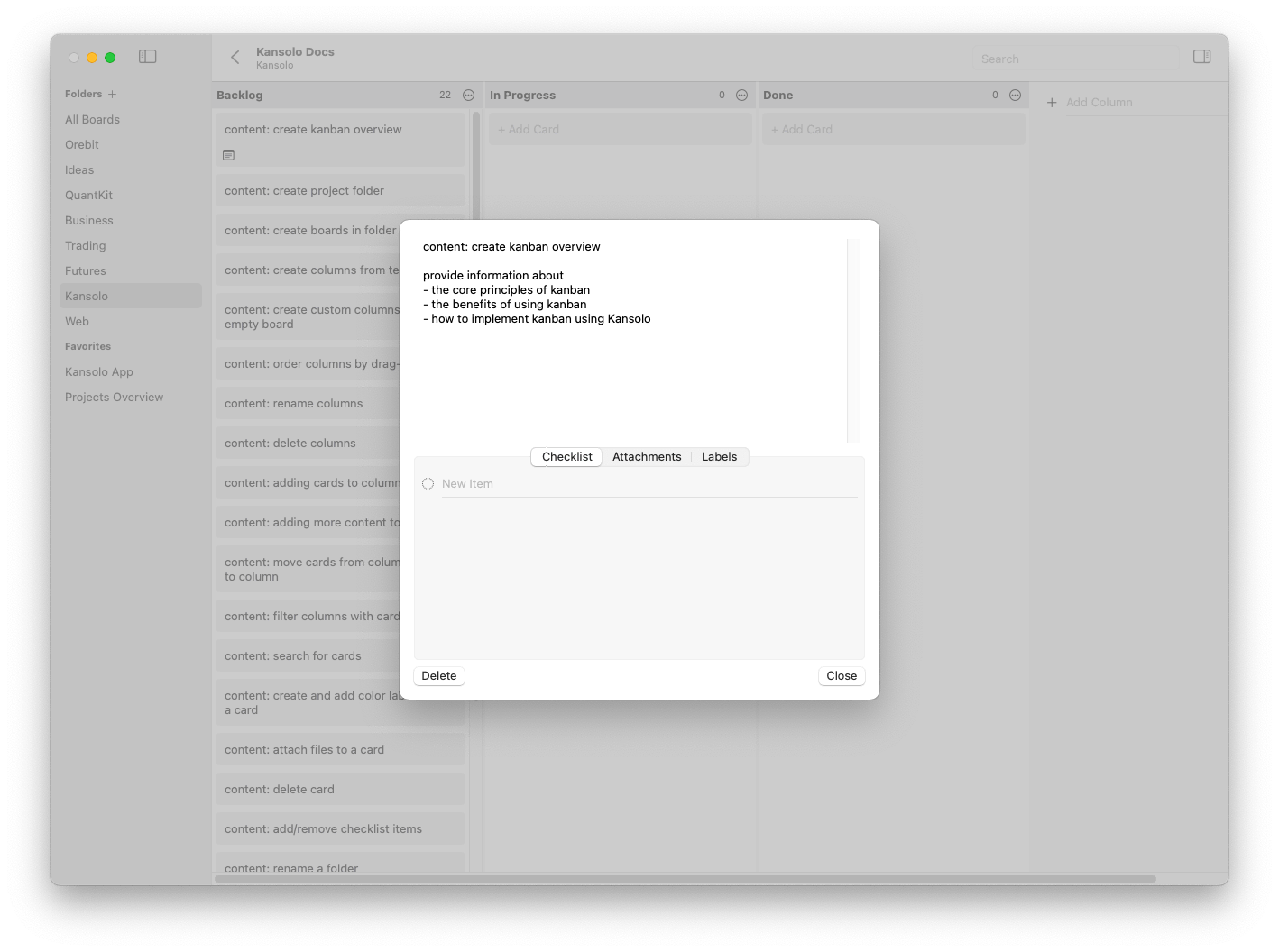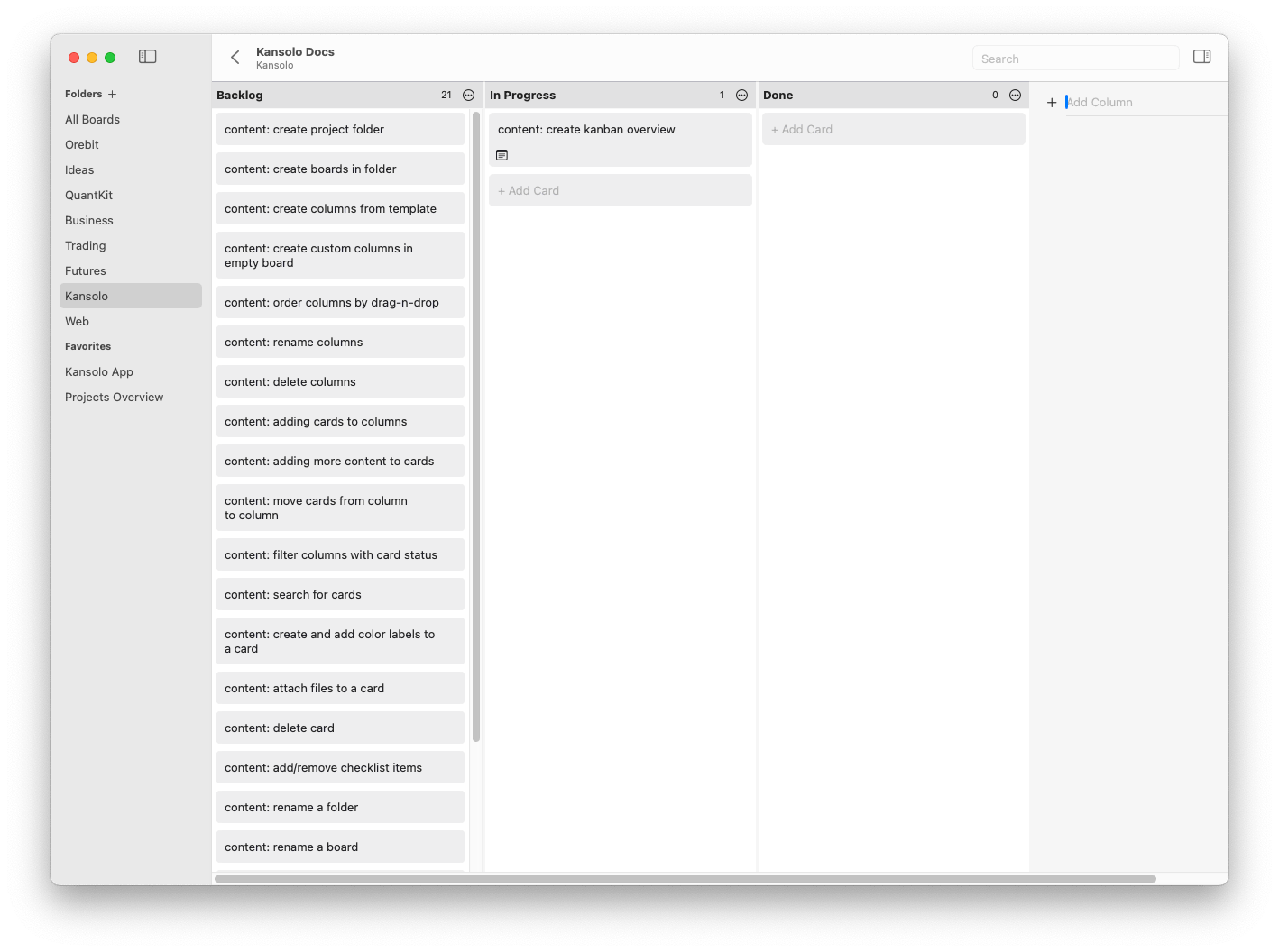Boards & Folders
Columns
Cards
Understanding the Kanban Project Management Method
The Kanban project management method is a popular and efficient approach to managing tasks and projects, widely used across various industries. Originating from the manufacturing sector, particularly from Toyota’s production system in the 1940s, Kanban has since evolved into a versatile tool for project management, particularly in software development, marketing, and operations.
What is Kanban?
Kanban is a visual workflow management method that helps teams and individuals visualize their work, maximize efficiency, and improve continuously. The term “Kanban” is Japanese for “signboard” or “billboard,” reflecting its core principle of visualizing tasks to enhance clarity and focus.
Core Principles of Kanban
-
Visualize Work: The foundation of Kanban is creating a visual representation of your tasks. This is typically done using a Kanban board, divided into columns that represent different stages of the workflow, such as “To Do,” “In Progress,” and “Done.” Each task is represented by a card that moves through the columns as it progresses.
-
Limit Work in Progress (WIP): To prevent overloading and ensure smooth workflow, Kanban limits the number of tasks that can be in progress at any given time. This helps maintain focus and prevents bottlenecks, allowing for more consistent and efficient work.
-
Focus on Flow: Kanban emphasizes the smooth flow of tasks through the workflow. By monitoring and managing the flow, you can identify and address bottlenecks, ensuring that your work moves steadily from start to finish.
-
Make Process Policies Explicit: Clearly defined processes and policies helps you understand how work should be done and what is expected at each stage. This clarity improves consistency and reduces confusion.
-
Improve Collaboratively, Evolve Experimentally: Kanban promotes a culture of continuous improvement through personal efforts and experimentation. You are encouraged to make incremental changes, test new ideas, and learn from the outcomes.
Benefits of Kanban
-
Enhanced Visibility: By visualizing tasks, Kanban provides a clear overview of the entire project, making it easier to track progress, identify issues, and prioritize work.
-
Increased Efficiency: Limiting work in progress ensures that tasks are completed more quickly and efficiently, reducing the risk of burnout and improving overall productivity.
-
Flexibility: Kanban is highly adaptable and can be customized to fit the specific needs of any project. It allows for adjustments in real-time, accommodating changes and new priorities.
-
Continuous Improvement: The focus on feedback and iterative changes helps you continuously refine your processes, leading to sustained improvements over time.
Implementing Kanban using Kansolo
To implement Kanban, follow these steps:
- Set Up Your Kanban Board: Create a board with columns that represent the stages of your workflow. Customize it to suit your project’s needs.

- Add Tasks as Cards: Represent each task with a card, including relevant details such as descriptions, checklists, and additional data.

- Move Cards Through Columns: As work progresses, move the cards through the columns. This visual representation helps track the status of each task.

- Monitor and Adjust: Regularly review the board to monitor progress, identify bottlenecks, and make necessary adjustments.
Kanban is a powerful project management method that enhances visibility, efficiency, and collaboration. By adopting Kanban, you can streamline your workflows, improve productivity, and foster a culture of continuous improvement.